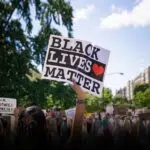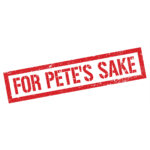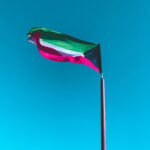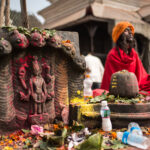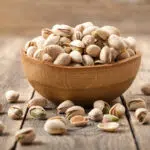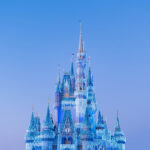Carnival Day is celebrated every year on February 26 and it is the perfect reason to let loose and party. A carnival is the perfect excuse to enjoy a large-scale party with all the trimmings and thrills. One has only to think back to the heady days of childhood to conjure up images of candy floss, amusing sideshows, and rides that give you butterflies. And if you have yet to experience the magic of the carnival, now is as good a time as any!
History of Carnival Day
We love the fact that the actual officiation of Carnival Day remains a mystery because it goes well with the idea of what the carnival is, and what it represents. For ages now, the carnival has always had an air of mystery and allure to it, probably because it provided certain thrills which could not be experienced elsewhere. Even in cultural studies, the term ‘carnivalesque’ developed from the word carnival, due to the disruptive and subversive connotations it holds. This idea was first introduced in the mid-1900s, in the writings of Russian linguist and literary critic, Mikhail Bakhtin. According to Bakhtin, the carnival is a space where societal norms can be subverted for a time, through the use of humor and a touch of chaos (sounds like a party!).
To trace the roots of Carnival Day, we must go back to the history of the traveling carnival itself. Way back, as early as 98 A.D., is the first written account by the Roman historian Tacitus, about carnivals taking place among Germanic tribes to celebrate the end of winter. We’re sure that there may have been other people groups worldwide, who had similar festivities. During the Middle Ages in Europe, as commerce began to burgeon and shape the economic landscape, agricultural shows and trade fairs began to emerge. It is fair to say that these were the seeds for what eventually became the traveling carnival. By 1861, children’s rides, which were powered by steam, had been invented but were not yet in use at carnivals.
It was not until the 1890s that the traveling carnival, as we know it today, really came into being in the U.S. The pivotal event was the World’s Columbian Exposition fair held in Chicago, in 1893, to celebrate 400 years since Columbus arrived in the Americas. It featured the world’s first Ferris Wheel and a Midway Plaisance — a strip of ground about a mile long that featured sideshows like vaudeville and burlesque, mechanical rides, games of luck or chance, and curiosity displays. By 1937, the number of carnival companies grew to 300. In some cases, circuses may also be a part of the traveling carnival, though the appeal of the carnival was mainly due to the sideshows, which often offered the layman a chance to glimpse dangerous or societally ‘forbidden’ spectacles. Hence the timeless appeal of the carnival, even though society keeps evolving.
Carnival Day timeline
The first evidence of carnivals celebrating the end of winter are recorded by the historian Tacitus.
In the Mediaeval period, agricultural and trade fairs increase with commerce.
George Washington Gale Ferris Jr. invents the first Ferris wheel for an expo in Chicago.
400 years since the arrival of Christopher Columbus, the exposition’s held in Chicago.
Carnival Day FAQs
What makes up a carnival?
A carnival is generally a public celebration organized on a grand scale or a smaller scale. Some common elements of a carnival are parades, entertaining shows, street parties, and a variety of food.
What is the difference between a circus and a carnival?
Circuses are generally held in tents, where the ring is the central platform for acts of entertainment to be witnessed by the spectators. There is an element of show or performance, which is integral to a circus with the purpose being to entertain. A carnival is usually a large-scale social event held for a purpose that could be religious, cultural, historical, or in support of a cause. It usually features a range of food stalls, games, rides, and other fun activities.
What is the difference between ‘carnival’ and ‘carnaval’?
There is essentially no real difference between the two terms. A carnival signifies the entertaining fun fairs or public fests that are celebrated in different ways around the world. Carnaval is simply an alternate spelling of the same; more commonly used in countries where European languages (like Spanish or Portuguese) are spoken.
Carnival Day Activities
Attend a traveling carnival
Whether there is one rolling up to your town or city, or you may need to plan a quick trip — be sure to check out a real, live carnival, and cross that off the bucket list. There is also always a whole range to choose from, as carnivals are held in both winter and summer. Who knows, perhaps it may inspire you to go rogue and travel with the carnival too!
Throw your fete
Carnivals do not always have to be organized on a large scale. Many carnivals can also be local affairs, such as school carnivals. The key is to keep in line with the theme of carnivals, and then go crazy coming up with wild ideas for events and activities. Some suggestions we have are a waterslide, puppet shows or other creative sideshows, and a slew of outdoor games.
Indulge in ‘carnie’ art
Pun intended. If going out and being out among the throngs is not your cup of joe, then perhaps you can seek your thrills from the world of art — there is plenty of mystique and fantasy at play in literature and movies featuring carnivals. Maybe plan a carnival-themed movie night with your favorite people, making sure you stock up on carnival-approved food like corn dogs, popcorn, funnel cake, and other deep-fried goodies.
5 Facts About State Fairs Which May Intrigue You
Dr. Pepper first appeared at a fair
The debut of the famous drink, Dr Pepper was at the World’s Fair in St. Louis, in 1904.
Butter sculpting is a carnival thing
In many state fairs, one of the main attractions is butter sculpting.
Marajuana can be judged
In some state fairs, weed can be brought in among other agricultural produce to be graded.
Snakes and scorpions on the menu
Some state fairs, like in Arizona and California, offer up snakes and scorpions as edible delights.
Corn dogs galore and then some
The Minnesota State Fair goes through around half a million corn dogs each year.
Why We Love Carnival Day
Carnivals are fun
The lure of the carnival can be thrilling. Perhaps it is because it appeals to a range of people and various ages, and is also affordable fun. Either way, it retains a charm that we hope will never fade.
A universal appeal
Though the focus has mainly been on the traveling carnivals in the U.S., they are not unique to North America solely. All over the world carnivals are held for different reasons and at different times, but the purpose remains universal — to entertain and amuse the masses.
Social cohesion
There’s nothing like a carnival to bring together people from all walks of life, with the sole purpose of having a good time and enjoying the unique blend of culture, tradition, and entertainment that carnivals pack in equal measure. We love how the carnival is a space where there is something for everyone.
Carnival Day dates
| Year | Date | Day |
|---|---|---|
| 2025 | February 26 | Wednesday |
| 2026 | February 26 | Thursday |
| 2027 | February 26 | Friday |
| 2028 | February 26 | Saturday |
| 2029 | February 26 | Monday |

